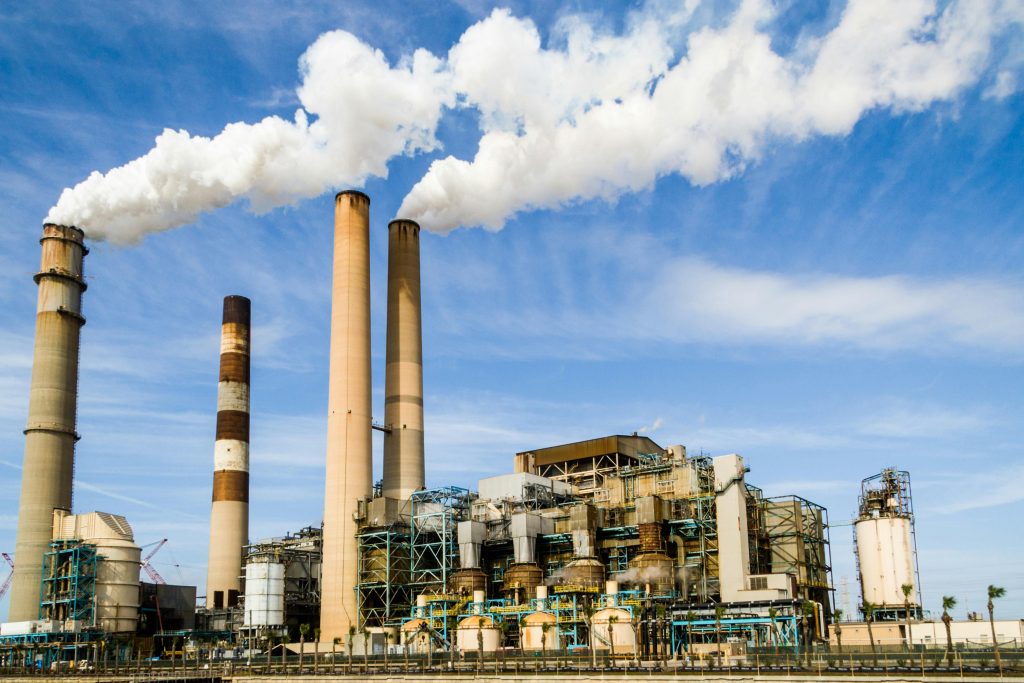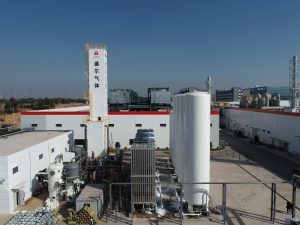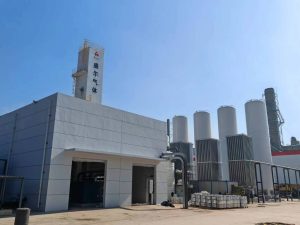Air cooling tower vs water cooling tower is the decision that quietly sets your plant’s temperature floor, water bill, and maintenance routine. Below is a field-tested comparison in three parts—how heat is rejected, what the hardware asks of you, and how to choose for a real site.
1) Air Cooling Tower vs Water Cooling Tower: how heat is actually rejected
An air-cooled tower (dry cooler) pushes ambient air across finned coils and removes heat as sensible load, so outlet temperature follows the dry-bulb curve. In hot months, a clean coil with fan headroom typically runs an 8–15 °C approach to dry-bulb; in winter it has generous capacity but needs freeze protection (glycol mix, heat-trace, or drain-back).
A water-cooled tower rejects heat by evaporation: warm water spreads over fill, a small fraction flashes, and latent heat does the heavy lifting. Performance tracks wet-bulb, so a well-kept tower can hold a 2–6 °C approach and deliver colder water under the same weather. That extra few degrees often shrink chiller lift or compressor discharge temperature. In short: air cooling tower vs water cooling tower comes down to sensible vs latent cooling—one favors simplicity and zero water use, the other favors lower temperatures and upstream energy savings.

2) Air Cooling Tower vs Water Cooling Tower: hardware, upkeep, and failure modes
Open a dry unit and you’ll see tube-and-fin bundles, axial fans on VFDs, and a galvanized/aluminum/stainless frame. It lives or dies on coil cleanliness and uniform airflow. The common slow failure is dust matting on fins: approach widens, fan kW creeps up, and the loss hides until shutdown. Routine work is coil washing, drive checks, and corrosion watch; the process loop stays clean by design.
Open an evaporative tower and you meet fill, drift eliminators, spray nozzles, and hot/cold basins in an FRP casing with PVC/PP internals. Here the craft is water chemistry: hold cycles of concentration, keep hardness/silica/chlorides in range, and avoid under-deposit corrosion. Hydraulics matter too—make-up, blowdown, and nozzle distribution. Drift must be contained near air intakes, and plume can become a permitting issue. Closed-circuit evaporative models split the difference: the process fluid stays inside a coil while the spray circuit provides evaporative punch. The practical thread in air cooling tower vs water cooling tower is the same—filters on returns, mid-tower thermometers to spot approach drift, gentle fan ramps at night, and materials matched to marine air, acid gases, or desert dust.
3) Air Cooling Tower vs Water Cooling Tower: choosing for a real site
Start with your dry-bulb and wet-bulb distributions, then overlay the August outlet temperature you truly need. If every extra degree of cold water saves upstream kW, a water-cooled tower often pays for its chemicals and blowdown. If water is trucked in, discharge space is tight, or neighbors won’t tolerate plume, a dry solution wins by being boring in the best way—no basins, no dosing, no drift, and a sealed loop that protects instruments and plates.
Tariffs tilt the scale: cheap power + expensive water push you dry; expensive power + manageable make-up/discharge push you wet. Layout matters too: low-tip-speed V-bank dry coolers suit height-limited roofs; a ground-level yard with good separation favors an evaporative tower with calm inlets and quiet fans. Hybrids deserve a look where summers are brutal but shoulder seasons are kind—run dry most of the year, add a light wetted assist for the peak. The right answer to air cooling tower vs water cooling tower is the one that hits the outlet setpoint on your worst day, behaves politely in January, fits your crew’s skills, and still looks sensible to the accountant in year three.



